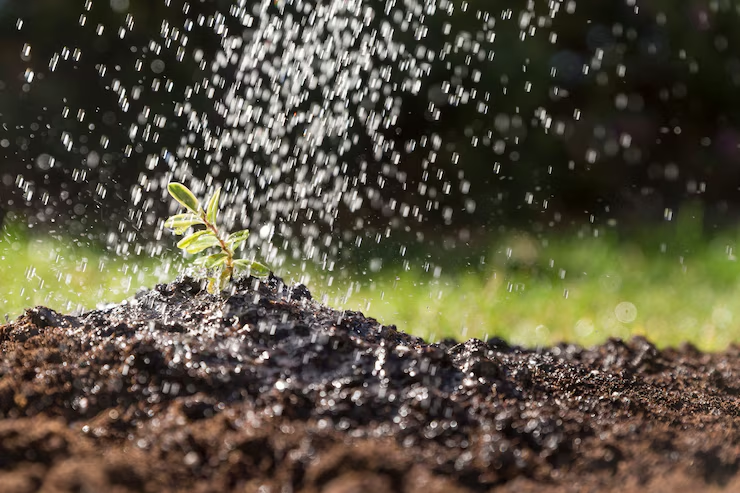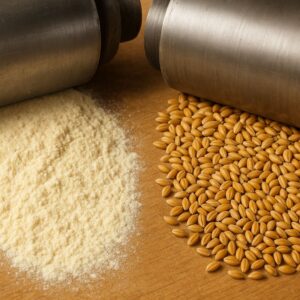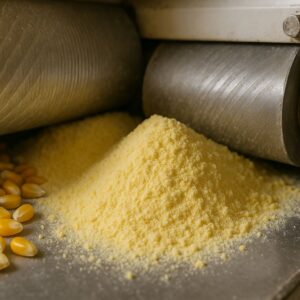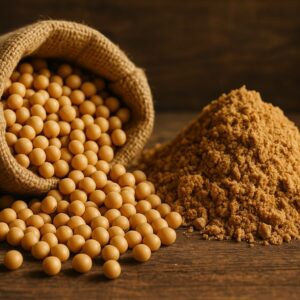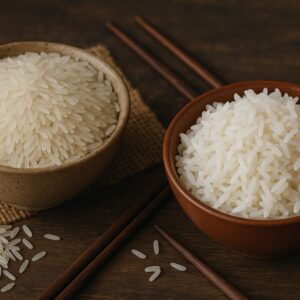Introduction
Water is the heartbeat of agriculture. Without a reliable water supply, even the most fertile land can fall short of its potential. For farmers around the globe, selecting the right irrigation system is a critical step toward achieving higher yields, conserving resources, and ensuring sustainable farming practices.
This comprehensive guide explores the best irrigation systems for agriculture, providing insight into how each system works, its pros and cons, and how to choose the one that fits specific farming needs. Whether managing a small-scale farm or a large agricultural enterprise, understanding the right irrigation solution can transform both productivity and profitability.
Throughout this guide, we’ll also highlight innovative solutions from industry leaders like CMS Industries, a trusted name among Agricultural Products Manufacturers and Agricultural Products Suppliers worldwide.
🌱 Why Irrigation Systems Matter in Modern Agriculture
In today’s fast-paced agricultural landscape, depending solely on rainfall is no longer viable. Irregular climate patterns and increasing water scarcity demand smarter, more efficient irrigation practices.
Here’s why investing in a suitable irrigation system makes all the difference:
- Improved crop yields
- Water-use efficiency
- Reduced dependency on unpredictable weather
- Optimal nutrient distribution
- Lower labor costs
- Sustainable soil management
The right system ensures that crops receive just the right amount of water at the right time—no more, no less.
💧 Overview of Common Irrigation Methods
Before diving into individual systems, it’s helpful to know the broad categories of irrigation:
| Irrigation Type | Description | Best For |
| Surface Irrigation | Water flows across the soil surface to reach crops. | Traditional, flat fields |
| Drip Irrigation | Water is delivered slowly at the root zone. | Water conservation, row crops |
| Sprinkler Irrigation | Water is sprayed over crops like rainfall. | Large-scale farms |
| Subsurface Irrigation | Water is delivered below the soil surface. | High-value crops, precision farming |
| Manual Irrigation | Carried out by labor using hoses or buckets. | Small gardens or subsistence farming |
Surface Irrigation Systems: Traditional, Simple, and Still Effective
Surface irrigation is one of the oldest and most commonly used irrigation methods in agriculture. While it might seem outdated to some, its effectiveness and simplicity make it a staple in many parts of the world, especially in regions with flat terrain and an abundant water supply.
🌊 What is Surface Irrigation?
Surface irrigation involves applying water directly to the soil surface and allowing it to flow naturally over the field. Gravity does most of the work, making it cost-effective and low-tech.
This method includes three primary types:
- Flood Irrigation
Water is released to flood the entire field. It’s the simplest form and is often used in rice paddies. - Furrow Irrigation
Water is channeled into furrows or small trenches between crop rows, ideal for row crops like corn and sugarcane. - Basin Irrigation
Fields are divided into small basins, each filled with water. This method is common in orchards and vineyards.
✅ Pros of Surface Irrigation
- Low installation and operational costs
- Minimal technical know-how required
- Suitable for large fields with uniform slopes
- Good for crops that need standing water (e.g., rice)
❌ Cons of Surface Irrigation
- Inefficient water use often leads to runoff and deep percolation
- Soil erosion risk due to uneven water distribution
- High labor demand
- Not suitable for uneven or hilly terrain
🔍 When to Use Surface Irrigation
This system is best suited for:
- Areas with an abundant water supply
- Flat land with permeable soil
- Crops that can tolerate or require standing water
💡 Expert Tip from CMS Industries
As a trusted Agricultural Products Supplier in India, we recommends surface irrigation systems for regions with traditional farming practices and access to reliable water channels. Farmers can pair surface irrigation with soil moisture sensors to improve water efficiency even in low-tech systems.
💧 Drip Irrigation Systems: Precision at Its Best
Drip irrigation, also known as trickle irrigation, has rapidly become one of the most efficient irrigation methods in agriculture. Especially popular in areas with limited water resources, it delivers water directly to the plant’s root zone drop by drop—saving water, time, and resources.
🌱 What is Drip Irrigation?
Drip irrigation involves a network of tubes and emitters laid out across a field. Water is slowly released through small openings near each plant’s base, delivering moisture exactly where it’s needed.
This system can be either:
- Surface drip irrigation: Tubes are laid on the soil surface.
- Subsurface drip irrigation (SDI): Tubes are buried beneath the soil, ideal for perennial crops and precision farming.
✅ Pros of Drip Irrigation
- Up to 90% water efficiency — minimal evaporation or runoff
- Reduced weed growth due to targeted watering
- Lower risk of fungal diseases from excess foliage moisture
- Consistent water and nutrient supply
- Automation friendly — works well with timers and sensors
❌ Cons of Drip Irrigation
- Higher initial cost than traditional systems
- Clogging issues if water is not properly filtered
- Regular maintenance required
- Not ideal for all soil types (e.g., very sandy soils may drain water too fast)
🌾 When to Use Drip Irrigation
Drip irrigation is ideal for:
- High-value crops (e.g., fruits, vegetables, and greenhouse plants)
- Water-scarce regions
- Farms focusing on sustainable practices and precision agriculture
💼 CMS Industries and Smart Irrigation
As a leading top Agricultural Products Manufacturer, CMS Industries champions drip irrigation for its transformative impact on farm productivity and water conservation. They offer advanced fittings, pipes, and solutions designed to maximize efficiency in both small and large farming operations.
Subsurface Irrigation Systems: The Underground Game-Changer
As agriculture evolves, so do irrigation technologies. One of the most innovative solutions today is subsurface irrigation, a system that delivers water below the soil surface—right where plant roots need it the most. This method is the gold standard for precision farming and water conservation.
🔍 What is Subsurface Irrigation?
Subsurface irrigation involves buried drip lines or porous pipes that deliver water directly into the root zone. Unlike traditional drip systems laid on the surface, these tubes are installed below ground, usually 6 to 18 inches deep, depending on crop type and soil.
There are two main types:
- Subsurface drip irrigation (SDI): Uses emitters to control water flow below the surface.
- Capillary systems: Distribute water usingthe soil’s natural wicking action.
✅ Pros of Subsurface Irrigation
- Maximum water-use efficiency — nearly zero evaporation
- Eliminates surface runoff and soil erosion
- Reduces weed growth significantly
- Improves nutrient delivery with fertigation options
- Ideal for automation and remote monitoring
❌ Cons of Subsurface Irrigation
- High initial installation cost
- Requires technical expertise
- Difficult to detect leaks
- Not ideal for shallow-rooted crops or very sandy soils
🌾 Best Applications of Subsurface Irrigation
This system works best for:
- Permanent crops like orchards, vineyards, and sugarcane
- High-value vegetables and fruits
- Areas with limited water and a focus on sustainability
- Precision agriculture farms using smart sensors and IoT
Manual Irrigation Methods: Simplicity in Action
While high-tech irrigation systems are revolutionizing agriculture, manual irrigation remains a cornerstone in many regions, especially in developing countries or small-scale farms where resources and infrastructure are limited.
It might not have the flash of automated systems, but when used strategically, manual methods can still be effective, low-cost, and essential for survival.
🪣 What is Manual Irrigation?
Manual irrigation involves physically applying water to crops using tools like:
- Watering cans
- Hoses
- Buckets
- Hand pumps or small-scale motorized pumps
This technique relies heavily on human labor and is most commonly used in gardens, small plots, greenhouses, and rural agricultural settings.
✅ Pros of Manual Irrigation
- Very low setup cost — ideal for resource-limited farmers
- No power or electricity required
- Flexibility — suitable for irregular or experimental layouts
- Total control over water amounts and placement
❌ Cons of Manual Irrigation
- Labor-intensive and time-consuming
- Inconsistent water distribution
- Limited scalability
- Higher risk of under- or over-watering
👩🌾 When Manual Irrigation Makes Sense
Manual systems are most suitable for:
- Small gardens or backyard farms
- Regions without access to water infrastructure
- Subsistence farming where every drop matters
- Startups and urban farming projects
🌍 CMS Industries’ Role in Supporting Every Farmer
Whether it’s high-tech systems or traditional methods, CMS Industries believes in empowering farmers at every level. As a leading Agricultural Products Manufacturer, they offer a wide range of irrigation tools—from basic fittings to advanced automated kits—that cater to farmers in all conditions.
Their products are engineered to be affordable, durable, and accessible, especially for those who rely on manual labor and small-scale operations.
How to Choose the Right Irrigation System for Your Farm
With so many irrigation systems available, selecting the right one can feel overwhelming. But making the right choice is essential for maximizing crop yield, conserving water, and managing resources effectively.
Here’s a breakdown of the key factors to consider when choosing an irrigation system that suits your farm’s unique needs:
📏 1. Farm Size and Layout
- Small Plots or Gardens: Manual or drip irrigation systems offer precise control and are cost-effective for limited space.
- Medium Farms: Sprinkler systems or surface irrigation methods can efficiently cover more ground.
- Large Fields: Center-pivot sprinklers or subsurface systems offer automation and scale.
💧 2. Water Availability
- Limited Water Resources: Drip or subsurface irrigation minimizes water waste.
- Abundant Water Supply: Surface or sprinkler systems are more viable, especially for traditional crops.
🧱 3. Soil Type
- Sandy Soils: Require frequent, light watering—best handled by drip systems.
- Clay Soils: Retain moisture longer, making surface or sprinkler irrigation ideal.
- Loamy Soils: Most systems work well, but still benefit from efficient distribution.
🌾 4. Crop Type
| Crop Type | Recommended Irrigation |
| Leafy greens | Drip, sprinkler |
| Fruit-bearing plants | Drip, subsurface |
| Grains & cereals | Sprinkler, surface |
| Orchards/vineyards | Subsurface, basin |
| Rice | Flood irrigation |
🛠️ 5. Budget and Technical Capacity
- Low Budget / Limited Tech: Manual or surface systems are ideal.
- Mid-range Budget: Sprinkler or drip irrigation offers balance between efficiency and cost.
- High Budget / High-Tech Farms: Subsurface irrigation and smart irrigation systems are great long-term investments.
📡 6. Automation Needs
Modern farmers are increasingly turning to IoT-enabled irrigation—automated systems using sensors, timers, and smart apps to control water flow. If that’s part of your vision, ensure your irrigation system supports automation.
🌐 CMS Industries: Helping You Make the Right Choice
Whether you’re a smallholder or a large-scale producer, CMS Industries offers customized irrigation solutions to match your unique farm conditions. Their team of experts helps clients choose from a wide selection of pipes, pumps, and fittings—all backed by their reputation as a top-tier Agricultural Products Supplier.
By choosing CMS, you not only get quality products, you get a partner committed to agricultural success.
Conclusion: Irrigation as the Lifeline of Agriculture
With current climate changes and population growth efficient irrigation becomes essential rather than optional. The evolution of irrigation techniques from traditional surface methods to modern subsurface systems gives farmers extensive options for every environment, crop type, and financial situation.
No single irrigation system fits all agricultural needs. The selection of an effective irrigation system relies on multiple variables, including water sources, land dimensions, soil composition, and plant species. Whether it’s a high-tech subsurface drip setup or a simple manual approach, the goal is the same: Farmers must supply their crops with precise water quantities at precise times.
As a dependable Agricultural Products Manufacturer and supplier, CMS Industries supports farmers with both traditional and modern solutions. Product quality combined with innovation and sustainability commitment positions them as a valuable partner for global agricultural operations.
❓ Frequently Asked Questions (FAQs)
Q1: What’s the most water-efficient irrigation system?
A: Drip and subsurface irrigation are the most efficient, delivering water directly to the root zone with minimal waste.
Q2: Can I use more than one irrigation system on my farm?
A: Absolutely! Many farmers use hybrid approaches, like drip for vegetables and sprinklers for grains.
Q3: How often should I maintain my irrigation system?
A: Regular checks every month are recommended, especially for clogs, leaks, or worn-out emitters in drip and subsurface systems.
Q4: Is it worth automating my irrigation system?
A: Yes, especially for medium to large farms. Automation can save time, labor, and water.
Q5: Where can I get high-quality irrigation products?
A: Visit CMS Industries, a top-tier provider of irrigation pipes, pumps, and fittings designed for long-term agricultural use.

